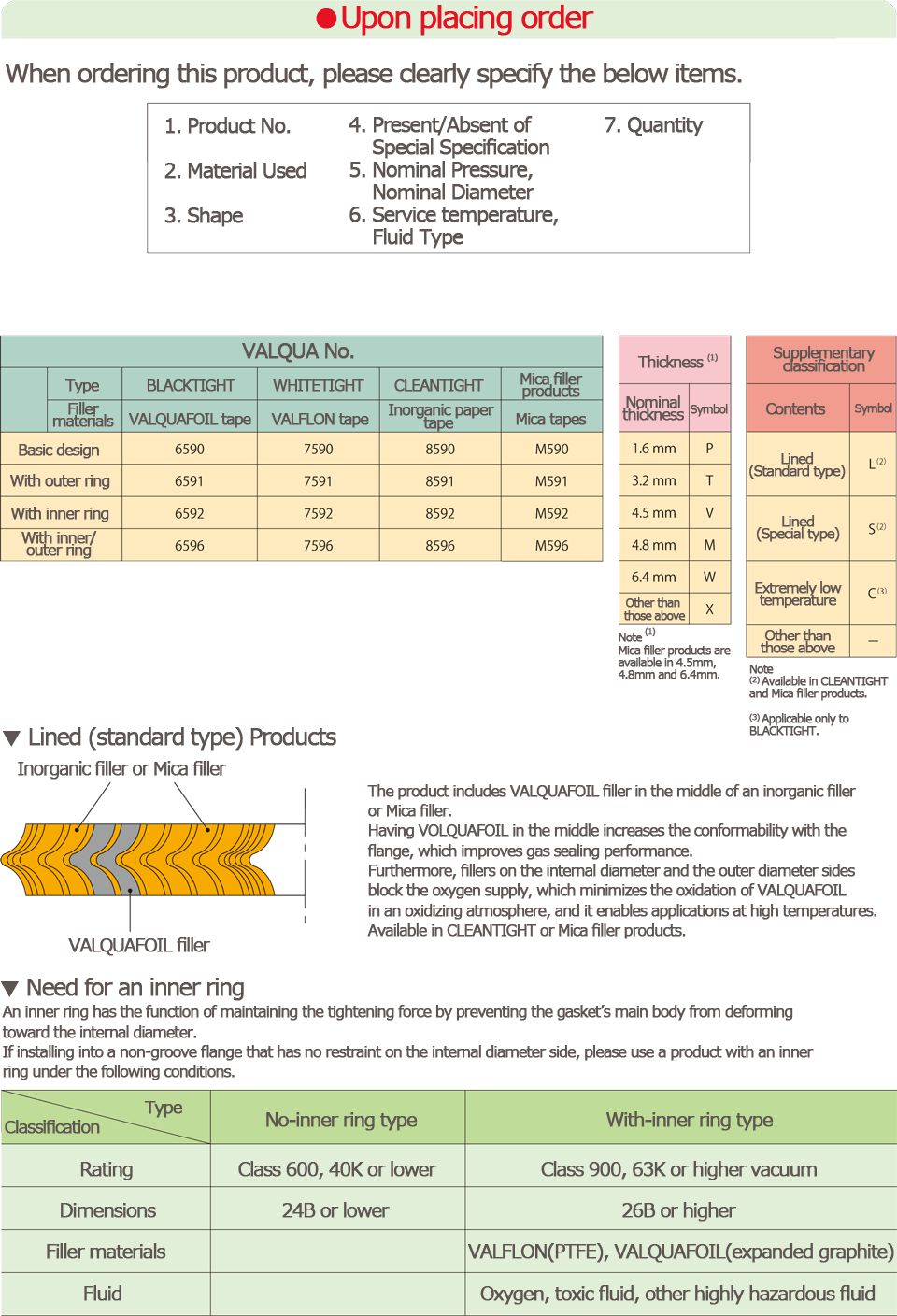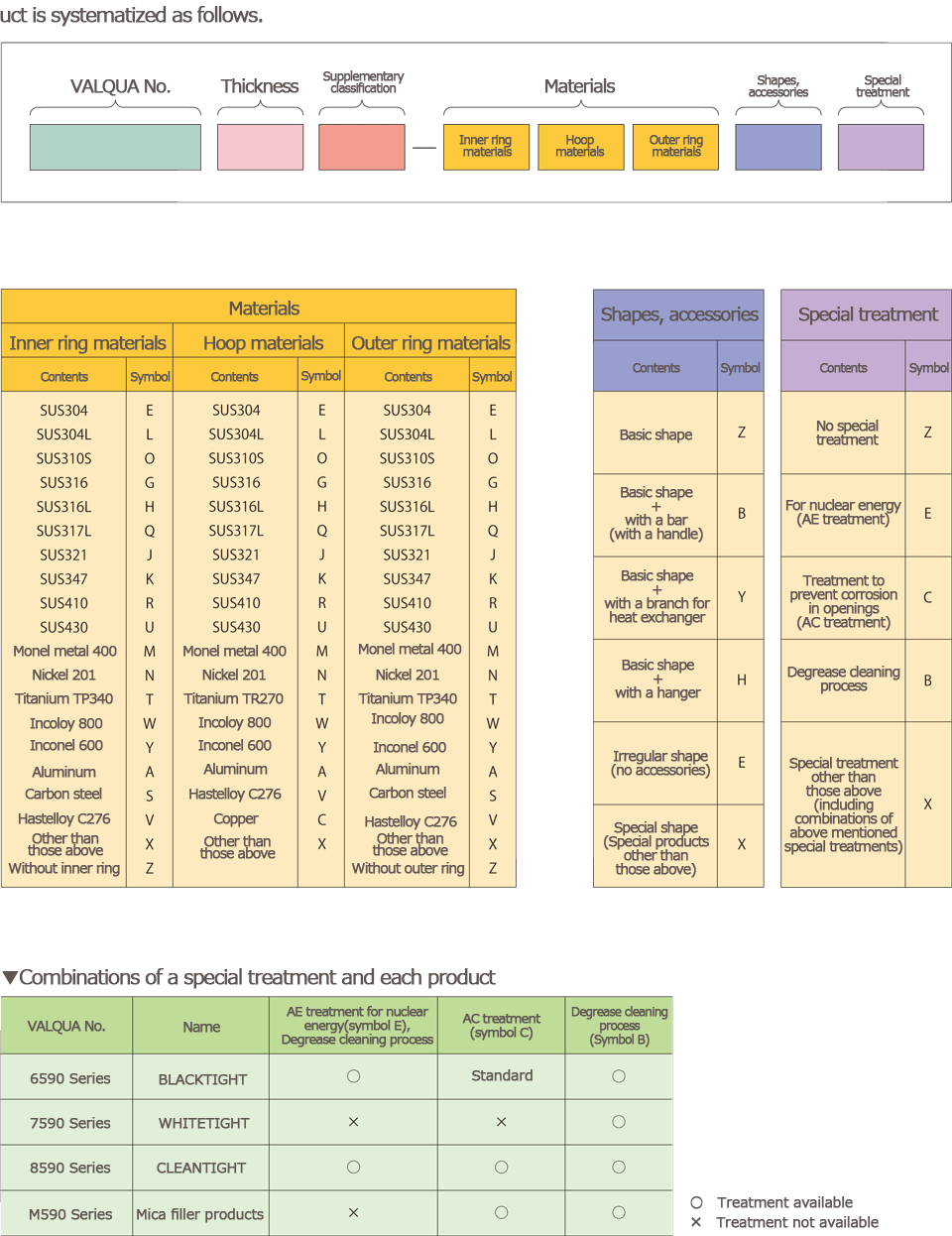VALQUATIGHT GASKET
Spiral Wound Gaskets use Non-Asbestos inorganic paper, VALQUAFOIL™ (expanded graphite) and VALFLON™ (PTFE) tape as filler materials, and exhibit good elasticity by means of a V-shaped hoop.

- VALQUA No.
- 7590
- Product name
- WHITETIGHT (basic design)
- Features1
- Spiral wound gasket using chemical-resisting VALFLON tape as filler material
- Features2
- Together with excellent corrosion resistance and proper selection of hoop materials, they can be applied to almost all fields of applications.
- Features3
- The basic-shape gasket is used for male-female and tongue and groove flanges, bonnets of valves, as well as covers for pressure vassels, towers, and tanks. It only requires a narrow width, and safe for use under high pressure.
- Features4
- Together with excellent corrosion resistance and proper selection of hoop materials, they can be applied to almost all fields of applications.
- Features5
- Excellent airtightness greatly improves sealing performance against gas in general and vacuum.
- Applicable fluids
- Water, Sea water, Hot water, Steam,Crude oil, Alcohol, Animal & vegetable oil, Heat transfer oil,General solvent, Weak acid, Weak alkali,Strong oxidizing acid, strong alkali,Air, Nitrogen gas, Inert gas,Exhaust gas,Inflammable gas,Poisonous,Oxygen,Extremely low temperature liquids,
- Inappropriate fluid
- Application
- In particular best suited as gaskets for seals for corrosive fluids and oxygen which can not be handled by other types of spiral wound gaskets, as well as for gas in general and vacuum seals.










